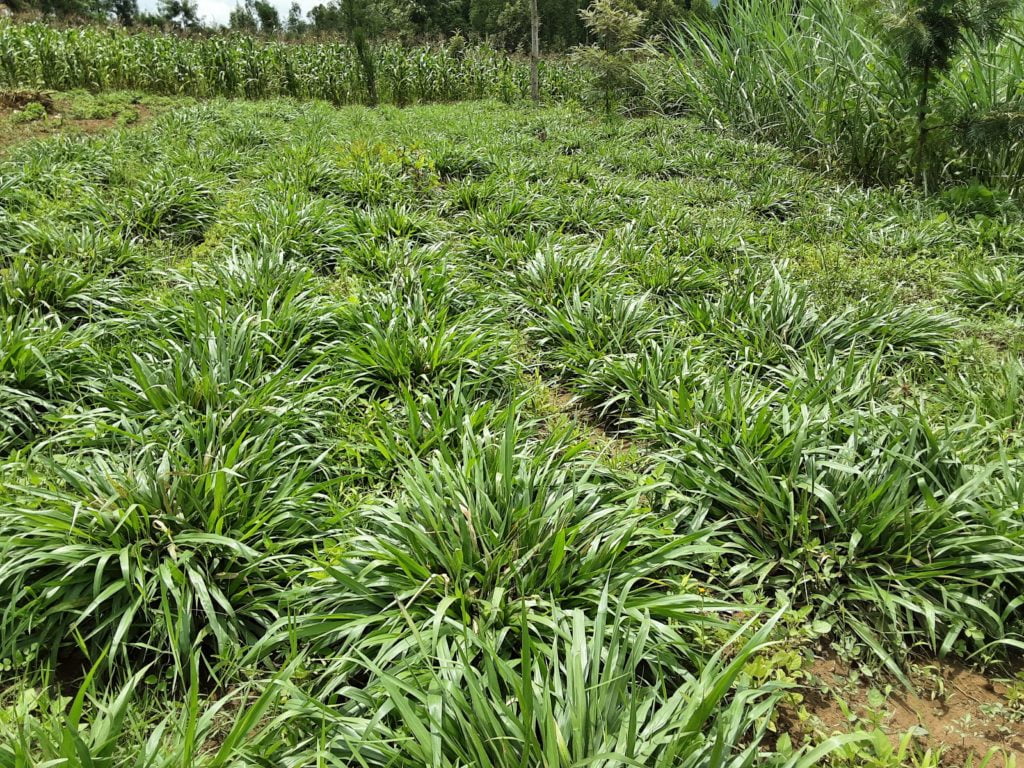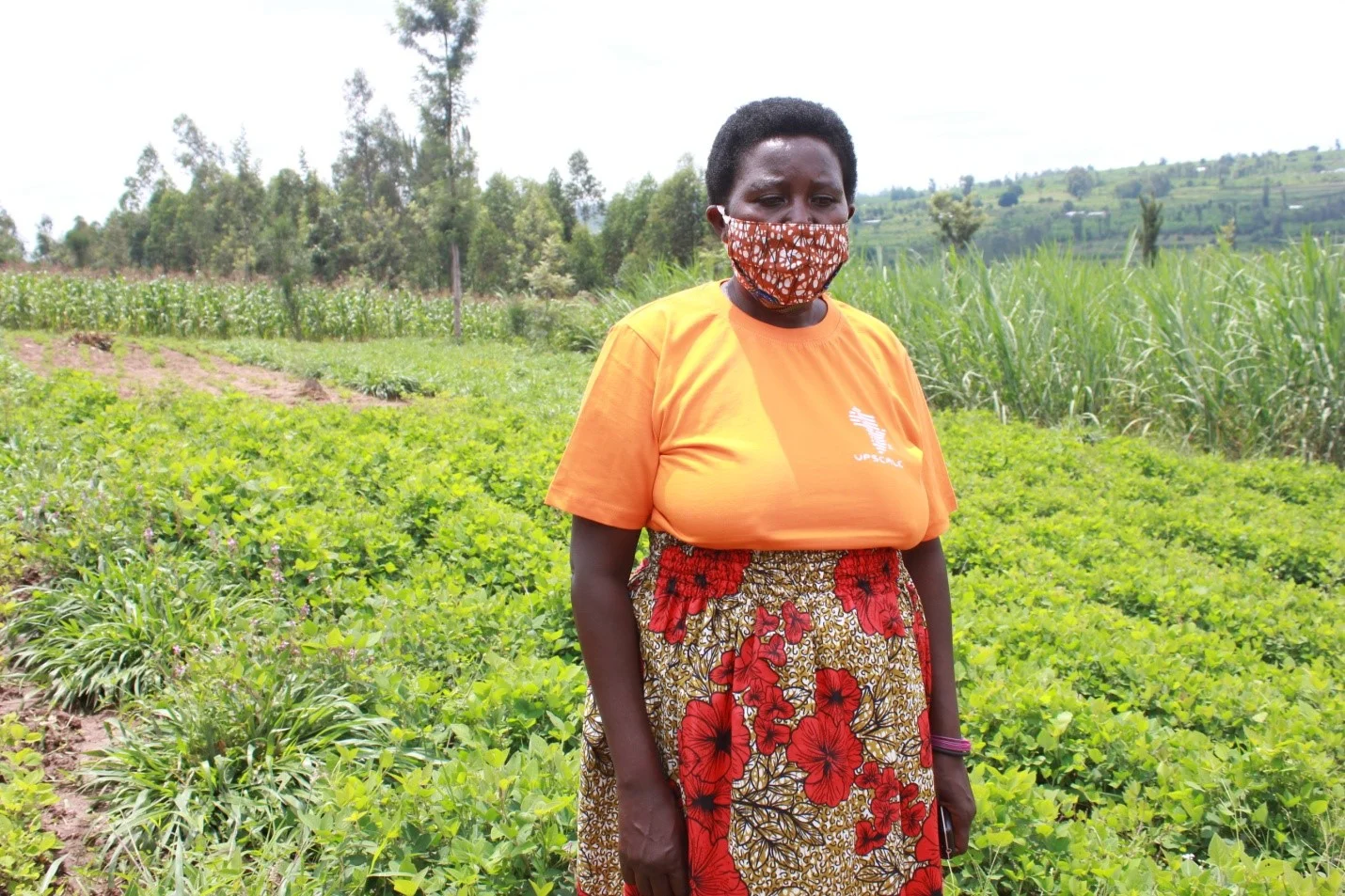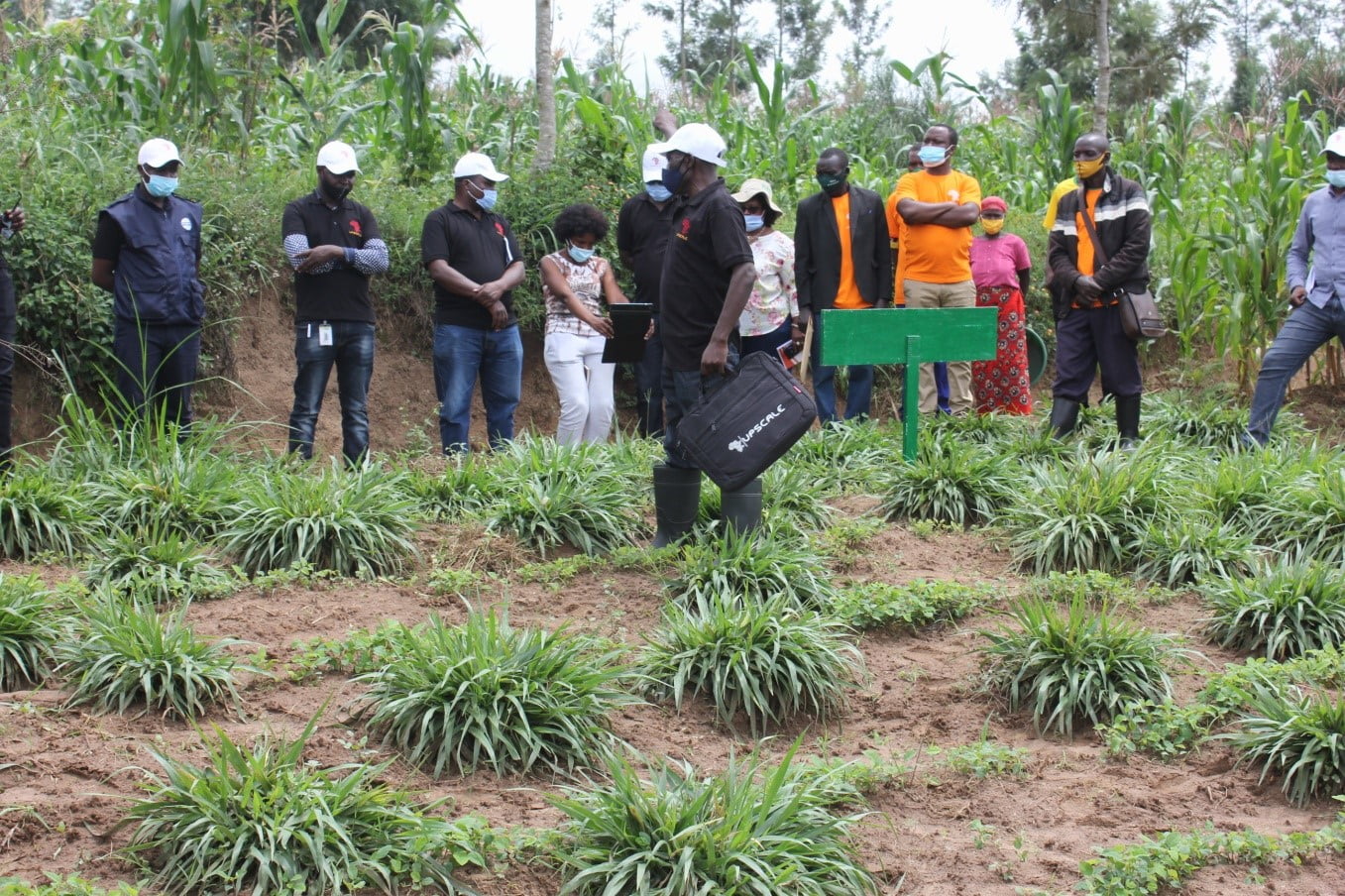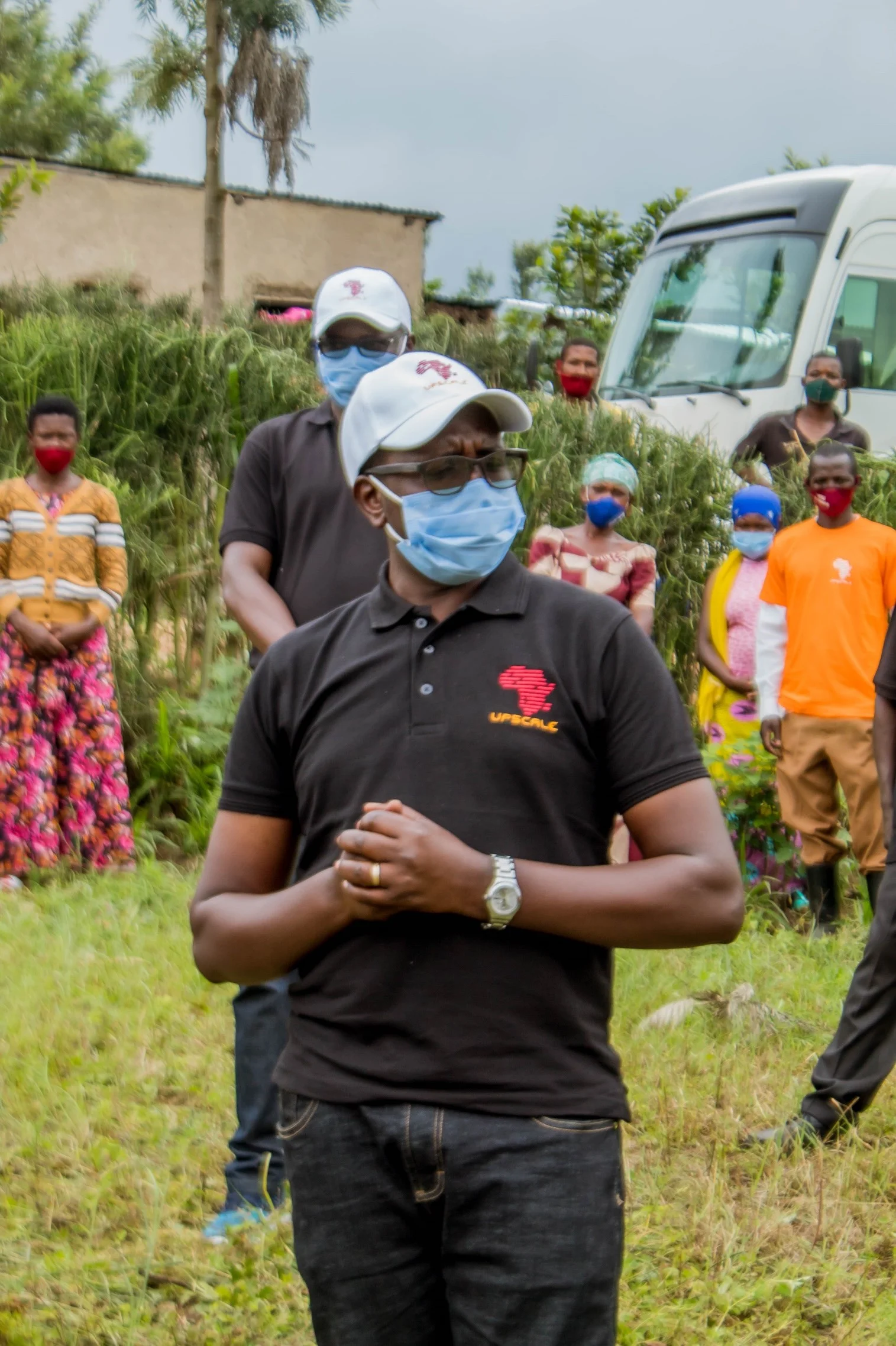Push Pull a solution to eradicate army worm while conserving environment

Bracharia which helps the farmer to fight pests (army worm).
Through UPSCALE Project for Food for Hungry, in partnership with Rwanda agriculture Board (RAB), a tangible research is underway in order to streamline traditional methods meant to fight army worm, which was dubbed Push and Pull, which is environment friendly.
UPSCALE Project is a research based Project, which focuses on Push and Pull technology, which is vital in the fight against pests by using traditional methods, as indicated by the in charge operations within Food for the Hungry in Rwanda, Gloria Mutoni.
She further reiterated the reason as to why Gatsibo District is among the Districts they operate. “Initially there was a Project which was operating from there, actually it can be regarded as a pilot Project, thereby rendering the farmers to internalize about Pull and Push Project, which would subsequently be helpful in the implementation, in carrying out a tangible research, while considering how it will help the citizens, as well as improving the technology, so as to enable it to improve its efficiency hence becoming more beneficial to the farmer.”
Gloria Mutoni had this to say,” Before pesticide chemicals could be used, thus enabling to get a good yield, however, it had an adverse impact on the environment.” But this technology is traditional, with an ability to fight pests (army worm), without negatively impacting environment.”

In Gatsibo District, Nyagihanga Sector, the ones who applied this traditional methods of fighting army worm hereby explain as to how it works, as well as the benefits attributed to it.
John Bugenimana, Push-Pull farmer in Gitinda Cell, Nyagihanga Sector, said, “When the fall army worm invaded It was not east at all for us to produce our maize, now after introducing Push Pull technology (PPT) in our plots, there is a gradual improvement. Before PPT we used to harvest not more than 300 kg on a plot of 50 acres due to a considerable loss in field caused by fall army worm, now with the introduction of PPT we can harvest 900-1000 kg on the same plot. Another advantage is the reduction of striga weed known as kurisuka due to the use of bracharia, and this increase the fertility of the soil. PPT has also enabled us to have reliable supply of feed for our livestock all year round as bracharia and desmodium always produce even in dry season; I don’t have a big land, but because of having desmodium, I never run short of pasture, and a cow which feeds on it enjoys it very much, even if you give it to a goat, it will eat everything. My wish would be to expand this method to other communities to enable other people to benefit from it”.

Pascasie UWIZEYIMANA, Push-Pull Farmer in Gitinga Cell, said “Push pull uses two grasses one planted between rows of maize (desmodium) and another planted on the contours of the field (bracharia). before when I hadn’t started using this method of Push and Pull, I used to get a meager harvest, as well as having a lot of army worm, I seemed to be cultivating in vain, but now when I started applying the method of pull and Push the harvest increased tremendously. FH Project did a great job and we are thankful, because it’s the one which first gave us these grass species, and we started distributing them amongst ourselves.
The effectiveness of Desmodium now can be evaluated at 75% because we have been using various variety, one specie could be more effective while another could not, we are now able to determine which one is more suitable to our land, however regardless the species, PPT has proved to increase the harvest compared to the plots without PPT. When you introduce the PPT for the first time, the harvest does not automatically increase considerably because the Desmodium do not produce enough smell when small to repel the predators, however when the desmodium and the bracharia becomes fully grown the effect they produce become more apparent and the harvest increases”.
Jean Baptiste SENZOGA, Push Pull Farmer in Nyagihanga Sector said “I have an agricultural land of 3.2 hectares, I started using the PPT in 2018, when FH mobilized us about how to fight army worm using this technology. The PPT is traditional arable farming, we use desmodium and bracharia grass species. It implies that we first plant the desmodium seeds/Push, thereafter planting maize in lines, whereby we also plant maize in between which are also planted I linear patterns, and finally planting bracharia on the boundary of the garden/Push. When butterflies which produce army worm come, they find desmodium which smells bad to them thereby fleeing to bracharia because it has a good scent. In such case, they lay eggs which eventually die thud rendering them to die, hence enabling us to get a good harvest of maize, without using the ordinary chemicals. Apparently the yield has increased, and we are now free from the burden of spending the whole day collecting army worm. In addition, Desmodium increases mineral salts in the soil”

Médiatrice Uwamurera is a resident of Mayange she had this to say, “This method is very excellent apart from fighting army worm, they fight striga, another species of grass which is harmful to crops. Where desmodium exists, striga can’t be present, and we use the species of the grass to feed livestock, because rabbits like bracharia very much we, and cattle too like bracharia it’s like the leeds”.
A researcher based in Rwanda Agriculture Board (RAB) in the department of fighting pests among crops, Nkima Germain said that chemicals which are sprayed in crops are used as a last resort, because there isn’t any other alternative; otherwise methods which are environment friendly are the ones which ought to be applied.
He said, “Chemicals which are used to kill army worm or other pests within the crops kills also other insects which are called inshuti z’abahinzi literally meaning “The friends of farmers”, because they are useful in increasing the harvest for example bees. Apparently research is underway in regard to find traditional methods which will be used in fighting crop pests, at the same time protecting environment, Push and Pull being among them. Push-pull as my predecessors have indicated uses two grasses Desmodium to push away the insect and bracharia to pull the insect from the maize field. For our livestock we are used to feed them the Napier grass but as you might have notice the current species of Napier grass commonly used in Rwanda has been gradually deteriorated over the past few decades due to various diseases and does not produce to the optimum. Bracharia used in the PPT is in the same group and contrary to the current species available in Rwanda, this grass provide enough production for the livestock. In addition, this species is resistant to drought which is often the main challenge in this area. Food for the Hungry in collaboration with RAB and other partners are conducting research to have enough evidences which will form the basis to expand this technology in the whole country”.

The UPSCALE consortium consists of a group of 18 partners from 4 European and 6 African countries. The UPSCALE consortium is ideally composed to tackle the challenges of developing and upscaling the push-pull management system in East Africa. In Rwanda the project is directly coordinated by Food for the Hungry (FH) association Rwanda and Rwanda Agriculture and Animal Resources Development Board (RAB) in close collaboration with other 20 partners.
The UPSCALE conducts the Multi Actors Community (MACs) of practices annually for effective transdisciplinary collaboration and participatory research among UPSCALE partners and stakeholders in planning, programming and implementation of activities at national and regional levels while building networks supporting advocacy for an enabling policy environment for institutional dissemination and adoption of the push-pull technology, both at regional and national levels. Push-pull is an integrated cropping system that involves driving pests away from the main crop using a repellent intercrop (the push) while attracting them out of the crop with trap plants. Before pesticide chemicals could be used, thus enabling to get a good yield, however, it had an adverse impact on the environment. But this technology is traditional, with an ability to fight pests (army worm), without negatively impacting environment.
The testimonies we have been getting from farmers indicate that those crops desmodium and bracharia are good for livestock because they have proved to increase the milk of cows feed on it. The main challenge now is to increase the adoption of this technology to as many farmers as possible and to make other stakeholders support its adoption in different ways. As any new technology it is not easy to convince people without enough evidences, so in UPSCALE we are trying to produce as many as possible evidence through researches with our 18 partners across the world which will form the basis for adoption and expansion. Another challenge we are having is to produce enough seeds or seedling of bracharia and desmodium, which haven’t yet become enough, so as to enable the farmers to have enough supply of them.

During the next 5 years we hope to have enough information and evidences which help us to make effective advocacy interventions to decision makers and other various chain actors to support the adoption and expansion of the push pull technologies. Today we have formed a management team for the multi actor communities for practices which will support the project to plan and implement advocacy events. The newly formed MAC management team will meet in June 2021 to set a programme of future activities to facilitate the effective implementation of the project. The project will also start a baseline survey in the selected location to produce benchmark data on which the project will be evaluated.

